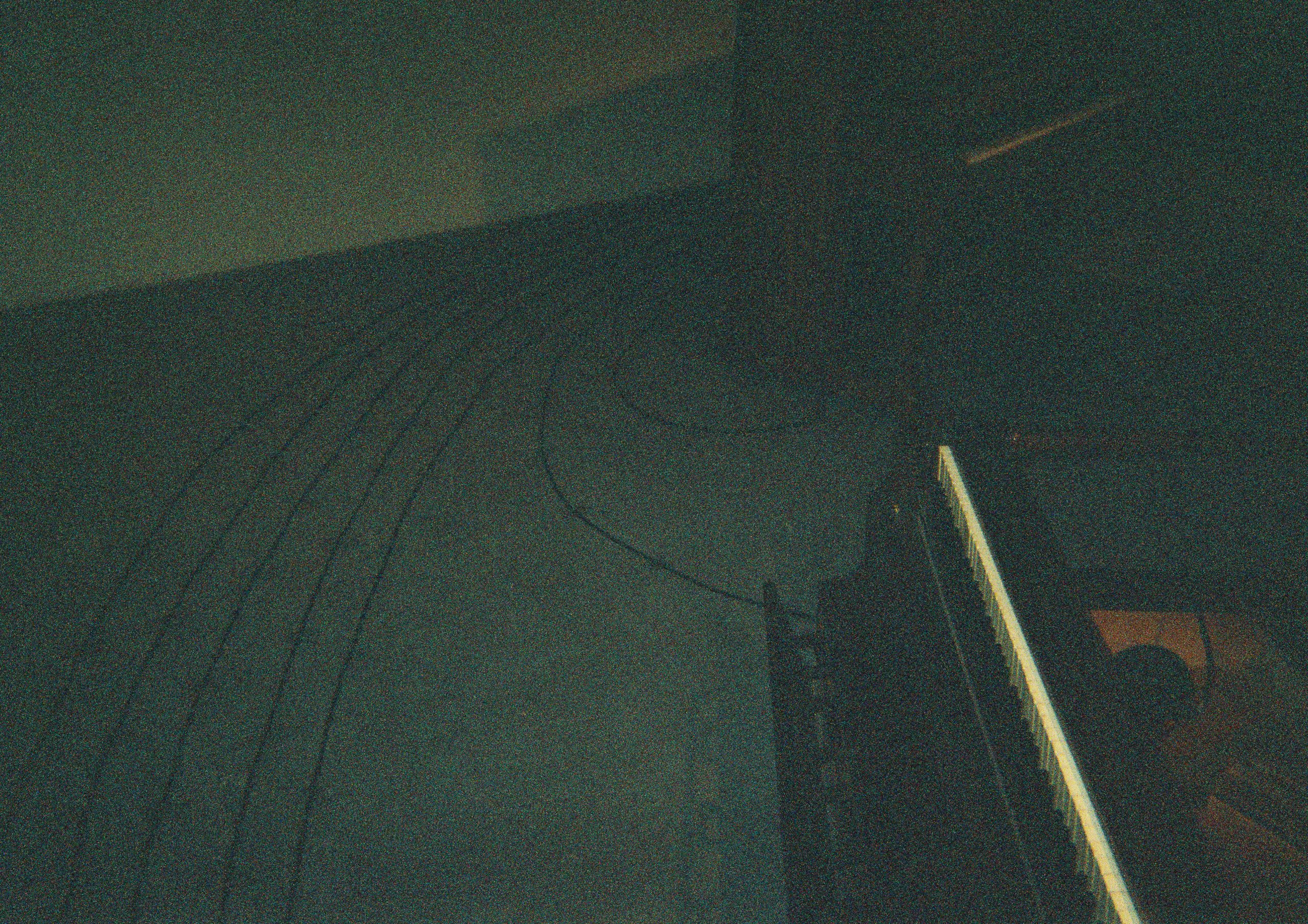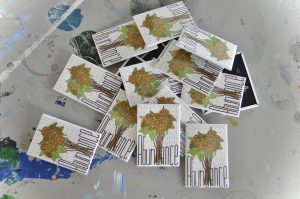
This piece was created through the Critic-in-Residence program at Bemis Center for Contemporary Arts. This new partnership offers an opportunity for a Sixty writer to visit Bemis in order to write a new piece that interacts with their current exhibition while also having the opportunity to engage with their artists-in-residence. Located in Omaha, Nebraska, Bemis facilitates the creation, presentation, and understanding of contemporary art through an international residency program, exhibitions, and educational programs.
There’s never enough room made for the dark(ness). There’s never enough room made for the darkness in spaces and the darkness within us. Perhaps if there were, the adjustment process to darkness would come with supplemental ease.
The darkness deserves to be venerated more often than not.
In Maya Dunietz’s show, Root of Two, which opened at the Bemis Center in May 2022, guests are prompted to inadvertently examine their relationships to the dark(ness). Dunietz’s piece, Air Sculpture (2013) is installed in a pitch-black room, inviting guests to adjust to the void by using their auditory senses. Upon leaving the dark room, I wrote down words I thought about while with myself inside the air sculpture.
In no particular or symbolic order:
cellophane wings sea salt fossil ghosts black sky fuel boots river embalms strings
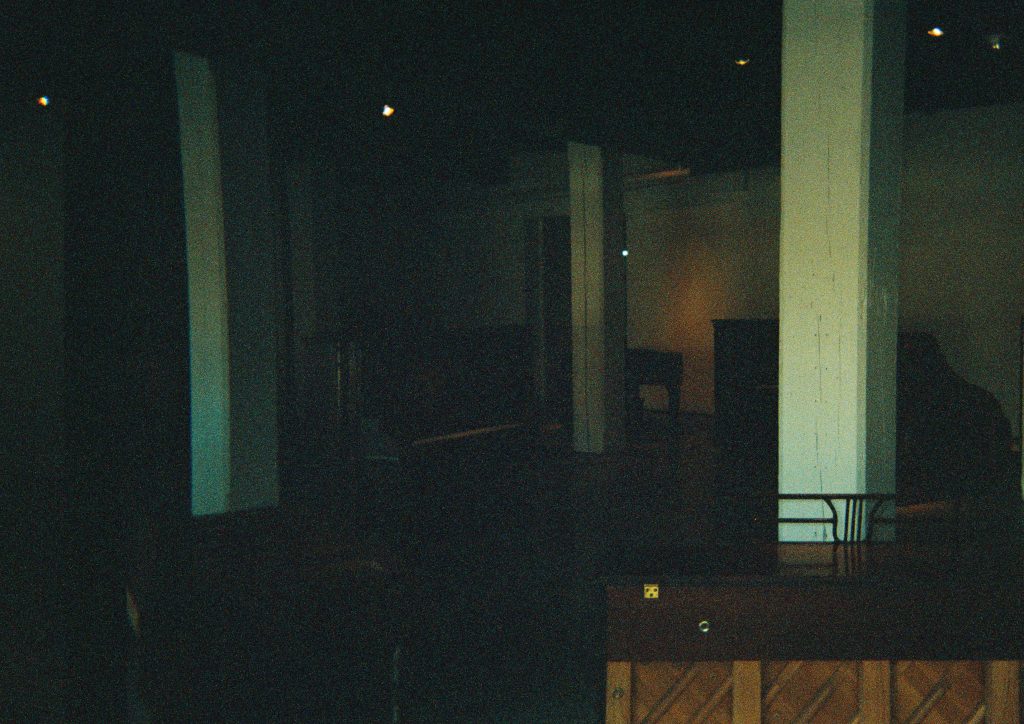
As a guest, I’m never quite concerned about the finality of the adjustment. I found myself thinking about guests that may have their auditory senses compromised in some way. What was their experience like? I found myself thinking about what the dark(ness) sounds like. In this iteration, it sounded like a trek-a commute to-and-out of somewhere, with an unknown distance, an unknown destination, with an unknown companion. Nevertheless, I experienced a catharsis in this dark room. I can’t quite recall the specific moment in the piece that induced an ongoing brain fog. In this space, the dark(ness) seemed like a factor to contend with, like having no say in being the last person dropped off from a carpool although you’ve been holding your bladder for the past six miles—a problem to solve more than an essence to coexist with—harmoniously. Perhaps it’s the angst that squats within anticipation.
On May 7, 2022, Venus squared Lilith in Cancer at three degrees.
In astrology, squares represent significant tension, strengthening or reinforcing the way two planets relate. Venus often represents money, relationships to materiality, aesthetics and other people. Venus is historicized as a feminine planet. Lilith ties to our personal relationships to sexuality, authority, and the ways we do (or don’t) defy the norms. Astrology can be another tool in a set of surgical instruments.
I’m incorporating astrology into this critique to assist with dissecting the notion of squares in Dunietz’s show because there was tension between the work and I. However, I don’t need it to define the root(s). I’m content with the conventional, monolithic definition of a root being the source of something else—the origin. I’m not an astrologer but I believe in the impact the solar system has on humans on Earth—beyond the Sun, the Moon and shooting stars.
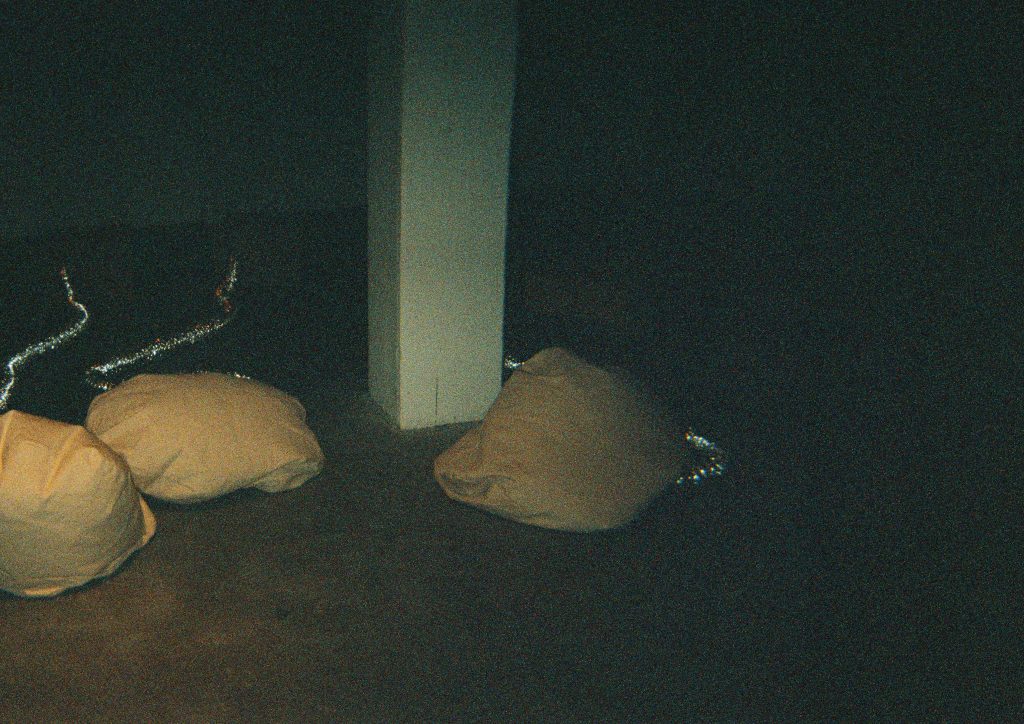
The installation √2 (2022) is comprised of seventeen pianos, which Dunietz refers to as “mammoths” and “beasts”. These beasts have been augmented on, drilled with transducers and connected to amplifiers throughout the gallery. Dunietz anticipated for these beasts to “spend their second life humming, roaring and shaking out” the composition the artist produced through their re-oriented, decrepit bodies. These beasts are all various shades of brown; some with their legs removed, others with their tops removed, some with all their inner organs exposed; all still appearing capable of emitting sound. When guests walk through the gallery interacting with the pianos, it alters the nature of Dunietz’s composition, creating another inflection of the sonic component.
All of these beasts lie in various states of sedation, inadvertently accessible to touch and play by guests. How many of us naturally possess the wish to disturb sleeping beasts? How many of us would get close enough to a sleeping beast to touch or fiddle with their tusks like minor keys if it wouldn’t cost us our lives? Why are humans seemingly so obsessed with differentiating themselves from the likes of beasts and wild animals, when humans inflict the most violence on its own kind [1]?
“Beasts challenge the strength of a man”[2]
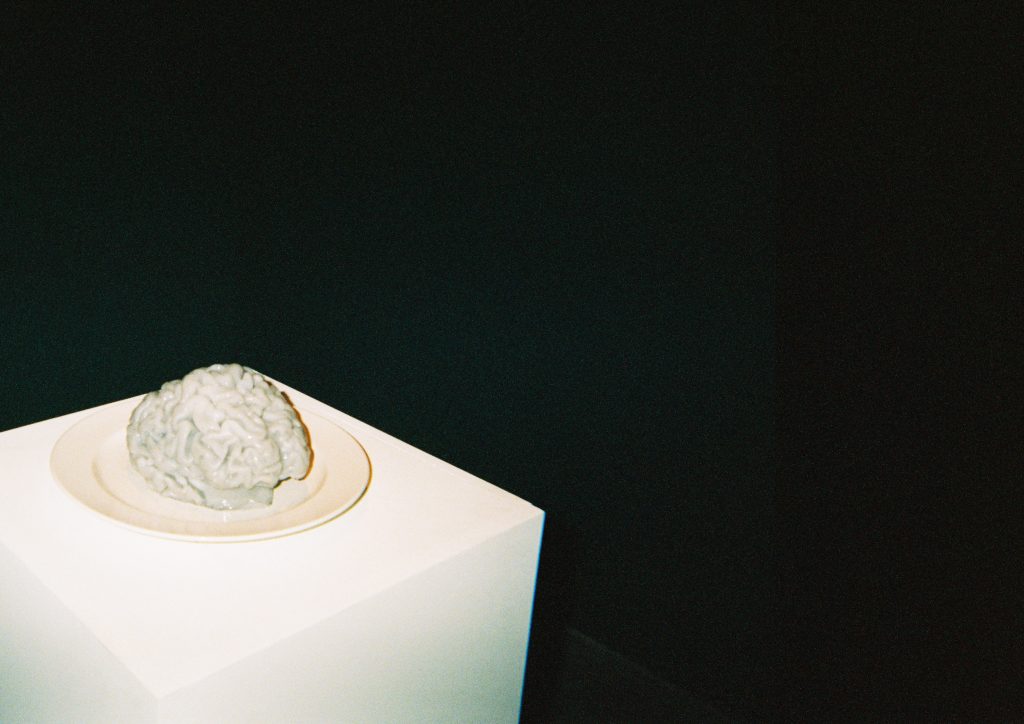
In Deborah Spungen’s memoir, And I Don’t Want to Live this Life, Spungen recalls the first time she looked into her newborn’s eyes. She describes the infant’s eyes as dark-resembling coals. After a life-threatening birth for both Deborah and the baby (Nancy Spungen), the memoir depicts living conditions with baby Nancy as insufferable. Between nonstop crying as an infant, violent outbursts as a toddler into adolescence, the only glimmer of alleviation: sedation.
Nancy’s pediatric doctor prescribed liquid phenobarbital to help her sleep through the night. Deborah describes how the slightest occurrence could disturb sleeping Nancy, resulting in piercing screams and crying—impacting her entire household. As history would unfold, liquid phenobarbital may have been the pipeline to Nancy’s heroin addiction and subsequently, her infamous death in the Chelsea Hotel.[3]
How do our conventional understandings of ethics, sameness, humanity, fragility and danger inform the way we understand the beasts that live in our hegemonic structures, desirability complexes and overall psyche? How do we tend to the beasts in our own backyards and what are the ramifications of these tendings? In a virtual conversation between Dunietz and I, she claims, “There’s a beast in all of us.” If what Dunietz says is true, then, what would life be like if we let all the Nancys of the world cry and scream their hearts out til something else came along? What if sedation wasn’t the only way to metabolize pain?
The work on view seems to tie into Dunietz’s relationship with the piano, which began at an early age. The piece √2 (2022) directly draws from experimental piano works by John Cage, Annea Lockwood’s Piano Transplants (1968-72) and Infiltration for Piano (1966) by Joseph Beuys. Dunietz’s title reinforces the irrational sum of the square root of two—suggesting that the work maybe embraces the impossible, the unreachable or the unknown.
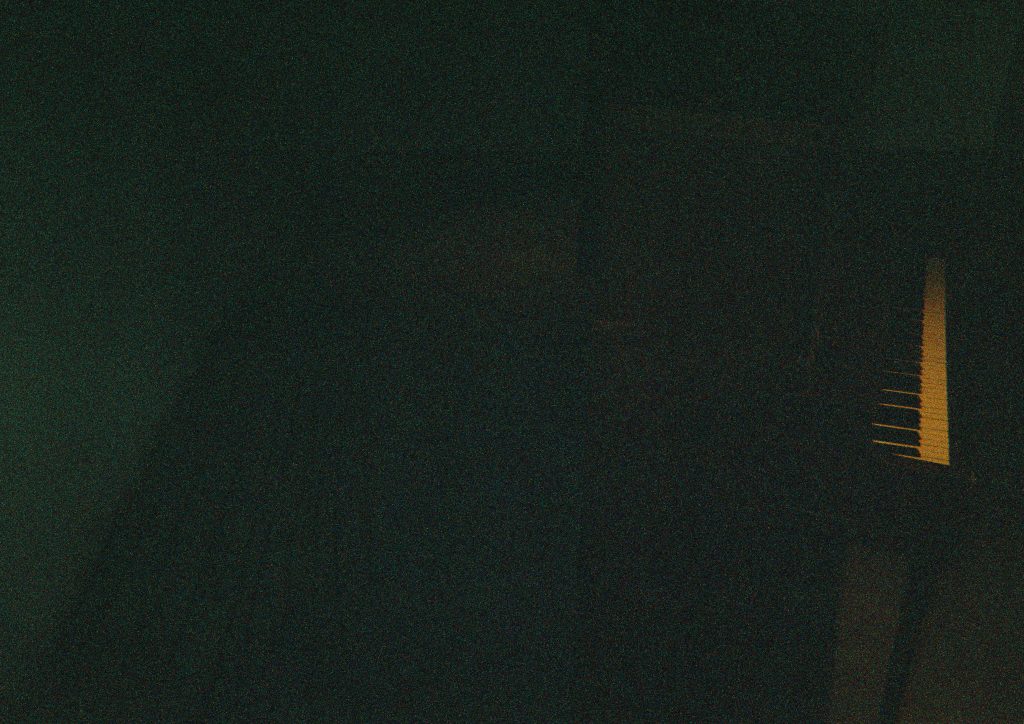
To put it simply, “the square root of a number is the factor we can multiply by itself to get that number”[4]. There’s a clean break with this methodology, leaving no room for the messiness of emptiness or separations. I’ve always processed emptiness as a lacking, a detriment or deprivation. Something inherently negative, informed by the value system I was raised upon, that I inadvertently adopted as my own. It is only recently that I’ve begun to see the [optimistic] possibility of emptiness. Informed by my barely-furnished apartment, vast interludes of solitude, and the lack of light fixtures in my studio, it inspired me to see the duality of emptiness a lot clearer. Perhaps the looming theme over how one perceives emptiness has to do with the duality of abundance and scarcity. How often is it that we look to fill ourselves up with the likes of lovers, drugs, parties, and noise in hopes to sustain a distraction from self-realization? How do we multiply ourselves without reinforcing the w.i.c.p[5]– lash? Again, like darkness, how can we multiply the reverence of darkness, the emptiness of color with an abundant lens instead of a depraved one? And if we apply abundance to the equation when thinking about loneliness, will it soothe our inner (scarce) thoughts around feeling empty and incomplete without someone else’s companionship? An interlude from Janet Jackson’s seminal album, The Velvet Rope comes to mind: “How empty of me to be so full of you.”*[6]
Dunietz’s piece, Boxes (2022), was literally the most empty yet most compelling for me as a visitor. This part of the gallery contained six plywood boxes of different sizes resembling caskets for someone with little- to-no social capital or for someone young. They also resemble speakers. Bass-heavy, loud music emanates from the empty boxes. There’s text within the gallery signaling guests to interact with the boxes the way they see fit—climb into, stand upon, rest, touch, cry, moan or yell into the six empty voids. The dissonance between the visually empty gallery space and the multi-faceted sound bleeding out of the boxes was enticing for me. Each box plays bits of a recorded set by Dunietz’s punk band, Possibilities of Milk. The emptiness of this piece reminds me of how lonely it sometimes feels to be at live shows, dance clubs, karaoke, and bars. I found myself sitting in the empty gallery conceptualizing how many people could squeeze inside gallery four.
I appreciate the way Dunietz aims to provide visitors with new ways of listening and experiencing sound. The bravery it takes to challenge traditions is felt all throughout the show. I’d like to prompt Dunietz and anyone reading this to defy the conventional ways of experiencing the dark(ness)—because there’s never enough room made for the darkness of space(s) and the darkness within us.
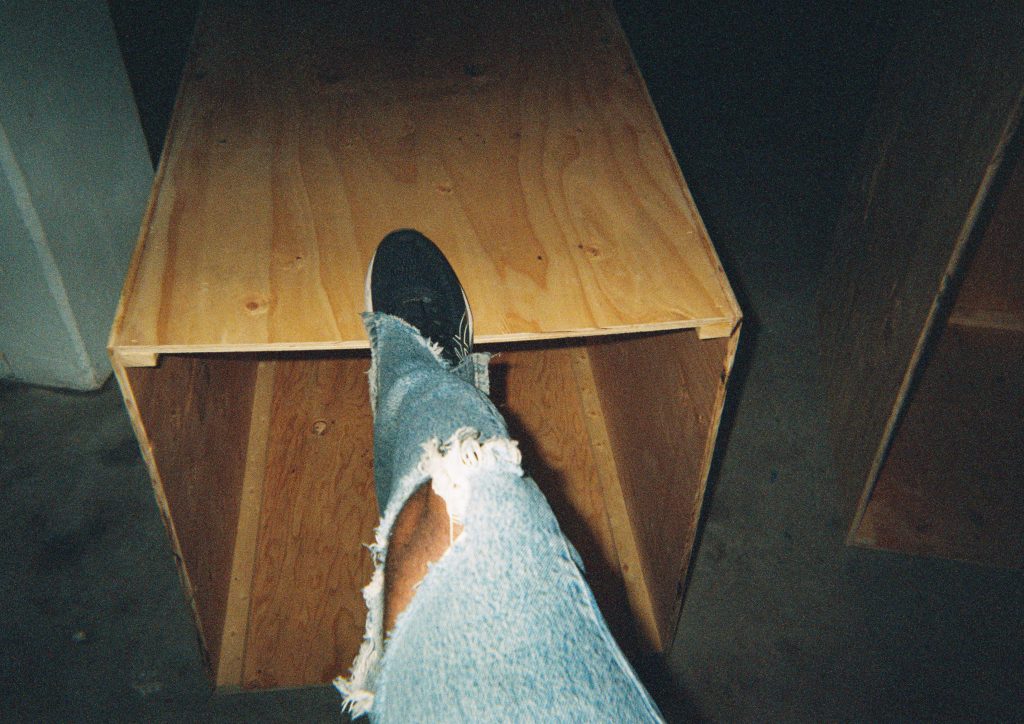
Maya Dunietz’s Root of Two was on view at Bemis Center for Contemporary Art from May 7 through September 18, 2022. The author visited the exhibition on June 29, 2022.
Works Cited
1 Masson, J. Moussaieff. Beasts: What Animals Can Teach Us about the Origins of Good and Evil. Bloomsbury, 2015.
2 Ogun, Ide. “How Do You Define Beasts? Where Does the Definition Come from?” Instagram, 30 Sept. 2022, instagram.com/jsbxse. Accessed 18 Oct. 2022.
3 Spungen, Deborah. And I Don’t Want to Live This Life. Ballantine Books, 1996.
4 Khan Academy. (n.d.). Square Roots Review (article). Khan Academy. Retrieved December 21, 2022, from https://www.khanacademy.org/math/cc-eighth-grade-math/cc-8th-numbers-operations/cc-8th-roots/a/square-roots-review
5 Brown, J. (2021). W.I.C.P: Pronounced like Whip. Chicago; Public Narratives. Abbreviation for White Imperialistic Capitalistic Patriarchy. The “C” is silent- functioning like capitalism in our current society.
6 Janet Jackson. (1997). Interlude – full. s.n. (*The Velvet Rope was officially released on October 7, 1997)

About the Author: Jared Brown is an interdisciplinary artist born in Chicago. In past work, Jared broadcasted audio and text-based work through the radio (CENTRAL AIR RADIO, 88.5 FM), in live DJ sets, and on social media. They consider themselves a data thief, understanding this role from John Akomfrah’s description of the data thief as a figure that does not belong to the past or present. As a data thief, Jared Brown makes archeological digs for fragments of Black American subculture, history, and technology. Jared repurposes these fragments in audio, text, and video to investigate the relationship between history and digital, immaterial space. Jared Brown holds a BFA in video from the Maryland Institute College of Art and moved back to Chicago in 2016 in order to make and share work that directly relates to their personal history. Follow Jared Brown on Instagram or on Twitter.
